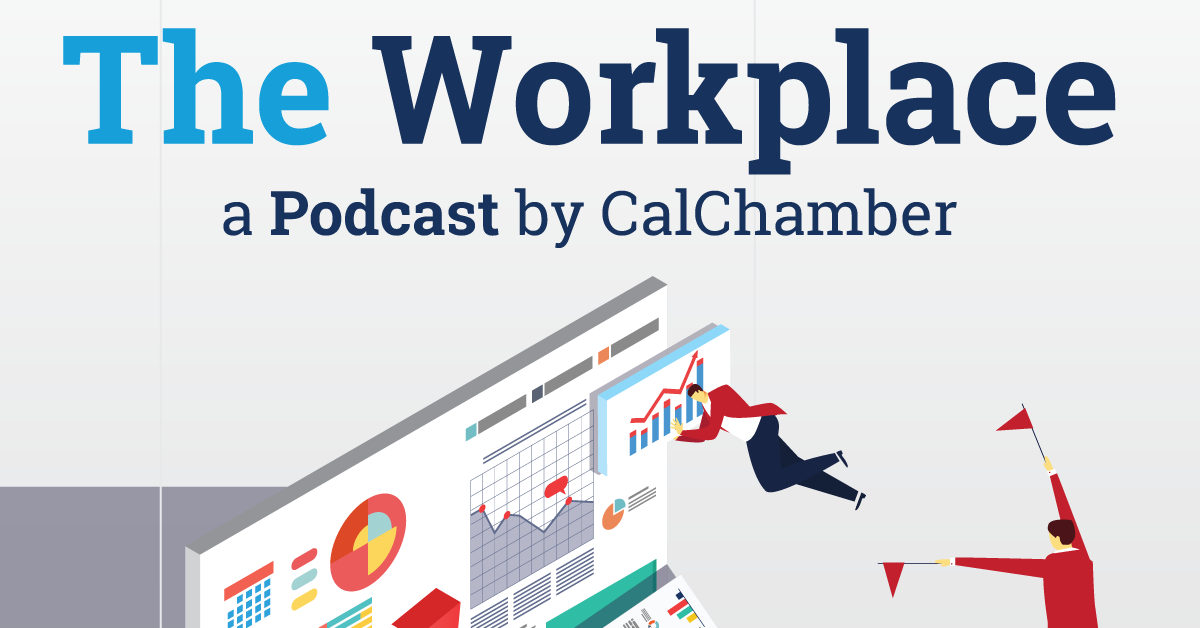Bussiness
Business Leaders Discuss Economic Consequences of California’s Prop 32

In this episode of The Workplace podcast, CalChamber President and CEO Jennifer Barrera, CalChamber Associate General Counsel Matthew Roberts and California Restaurant Association President and CEO Jot Condie discuss Proposition 32, a measure appearing on California’s November Ballot that would increase the state’s minimum wage to $18 an hour.
This November, Californians will be asked whether to raise the state’s minimum wage again. Proposition 32 would raise the minimum wage to $17 per hour for the remainder of 2024 for employers with 26 or more employees, and then the wage would rise to $18 an hour starting in January 2025. Small businesses with 25 or fewer employees would be required to start paying at least $17 next year, and $18 in 2026, Roberts says.
CalChamber Opposition
The CalChamber opposes Prop 32 due to the negative impact it would have on the state’s economy and small businesses, Barrera says.
“Just like everybody else in California, our small businesses are employers. They’re struggling with high costs right now, and this increase will only add to those costs and create pressures with regards to their budget,” she says.
These cost pressures on employers, she says, will result in job losses or in employees having their hours reduced.
Condie explains that minimum wage hikes typically don’t get put before voters—it’s something that the Industrial Welfare Commission, local governments or Legislature decide on through a deliberative process that considers the interests of workers but also the impact on employers.
The last minimum wage hike that was passed by the Legislature and signed by Governor Jerry Brown included “offramps,” where the governor has the ability to hit the pause button on wage hikes due to an unforeseen economic circumstance, such as a budget deficit. This would allow the economy to heal before the wage hikes would begin again.
“[Prop 32] has no offramps,” Condie warns.
Economic Impact
Barrera points out that inflation is affecting business costs too and small businesses, in particular, operate on very slim margins. As suppliers and vendors raise their prices, businesses are forced to make difficult decisions to manage their budgets. They might reduce employee hours or workforce size, which can lead to unintended consequences for the state’s economy.
Additionally, businesses may have to raise prices for consumers to offset these increased operational costs. This cycle can undermine the goal of enhancing employee purchasing power, as consumers ultimately bear the burden of price increases.
Recent data highlights California as significantly feeling the sting of inflation, with rising grocery prices partly linked to wage increases in that sector, Condie says. Over the past decade, the state minimum wage has seen hikes almost every single year (with the exception of 2015), placing ongoing pressure on business owners to adapt. The concern is that a sudden spike, like Prop 32’s proposed increase to $18 per hour, could exacerbate the situation, leading to widespread price hikes across various industries. Real-time examples, such as those seen in the fast-food sector after recent legislation, illustrate that similar consequences could affect small businesses like dry cleaners and salons, further complicating their financial stability.
Lessons from Fast Food Minimum Wage Hike
Condie points out that California’s economy is made up of diverse micro-economies, leading to significant regional differences that affect how businesses respond to regulations like the recent fast food minimum wage law. For instance, fast food franchisees in Silicon Valley can more easily pass increased costs on to customers compared to their counterparts in the Central Valley, where economic conditions are different. Municipalities such as San Francisco have raised minimum wages to address high living costs, highlighting that a statewide minimum wage increase would have varied impacts across different regions in California.
The challenge of these regional disparities is further complicated by labor laws that often tie hourly rates to specific areas, Barrera says. Employers operating statewide face difficulties in tracking varying wage requirements, making compliance more challenging. An example of this was in West Hollywood, where a minimum wage increase prompted strong pushback from small businesses that said they could not absorb the additional costs. The city acknowledged these concerns by providing an option for businesses to request a delay in implementation, demonstrating an understanding of the financial strain on small enterprises.
“The process is not ideal for having a consideration of a minimum wage increase of this type. It needs to be a more deliberative process where you can take into consideration the economic impacts this is going to have on those businesses, especially small businesses, and give them their opportunity to voice it. And we just don’t have that opportunity with this ballot initiative,” Barrera stresses.








